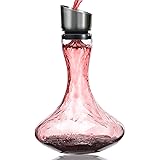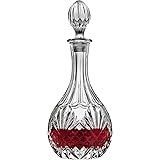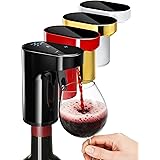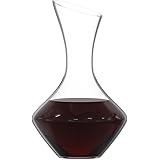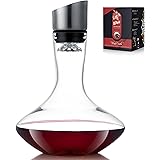I remember the first time I stood in a French wine aisle, staring at a dizzying array of labels. It felt like trying to read a secret code. Each bottle whispered stories of tradition and ancient lands, yet I understood little of their language. Many wine enthusiasts share this experience, finding the world of French wine both alluring and intimidating. Fortunately, the accompanying video, “French Vineyards: Decoding Old World Wine Regions,” begins to unravel these mysteries, offering a fantastic starting point for understanding the heart of French viticulture. This article expands on those insights, guiding you deeper into the legendary vineyards of France.
France, a land where history intertwines with nature, has long held its position as the global benchmark for wine. Its diverse landscapes, from rolling hills to majestic mountains and ancient rivers, create an unparalleled canvas for grape cultivation. The enduring legacy of French wine supremacy stems from a profound respect for the land and generations of meticulous winemaking. As we explore these renowned regions, we uncover the intricate dance between nature and human expertise that defines each unique bottle.
The Cornerstone of French Wine: Understanding Terroir
To truly appreciate French wine, one must grasp the concept of terroir. This isn’t just a fancy word; it’s the very soul of the wine. Terroir refers to the unique combination of soil, climate, topography, and human practices that shape a grape’s character and, consequently, the wine it produces.
Imagine if you planted the same grape variety, say Chardonnay, in two different locations: one with chalky soil and a cool climate, and another with rich clay soil under a warmer sun. The chalky soil would likely impart minerality and crisp acidity, while the clay might contribute to a fuller body and riper fruit flavors. This is the essence of terroir at play. French winemakers, through centuries of observation, have learned to interpret these subtle nuances, ensuring that each vine expresses its finest potential. This deep commitment to tradition and nature’s delicate balance results in wines of exceptional quality and longevity, each bottle telling a distinct story of its origin.
Bordeaux: The Capital of Powerful Red Wines
Our journey through French wine regions often begins in Bordeaux, widely recognized as a capital of the wine world. Situated on the banks of the Gironde estuary, Bordeaux’s vast vineyards are a testament to centuries of winemaking tradition. This region is famous for its powerful red wines, predominantly crafted from a blend of Cabernet Sauvignon and Merlot grapes.
Bordeaux is distinctly divided by the Gironde into two banks, each with its own character. On the Left Bank, where gravelly soils dominate, Cabernet Sauvignon reigns supreme. This grape yields wines of remarkable intensity, depth, and structure, often requiring significant aging to reveal their full complexity. Appellations like Médoc and Graves exemplify this style. Across the river, on the Right Bank, Merlot takes center stage due to the clay and limestone soils. These wines tend to be more opulent and plush, with softer tannins, making them approachable earlier. St-Émilion and Pomerol are prime examples of the Right Bank’s elegance.
Beyond its renowned reds, Bordeaux also crafts exquisite sweet wines. Sauternes, located in the southern part of the region, produces luscious golden nectar from Sémillon and Sauvignon Blanc grapes affected by “noble rot.” This unique fungus concentrates the sugars, leading to wines with honeyed notes and incredible aging potential, showcasing Bordeaux’s diverse terroir and winemaking expertise.
Burgundy: The Soul of French Wine and Terroir’s Intricacies
Next, we venture to Burgundy, a region often described as the soul of French wine. It is the spiritual home of two noble grape varieties: Pinot Noir and Chardonnay. These grapes reach their absolute pinnacle in Burgundy’s unique terroir, especially with its cool climate and limestone-rich soils.
Burgundy stands apart from Bordeaux with its patchwork of small, family-owned domaines, each fiercely proud of its heritage. Unlike Bordeaux’s focus on châteaux, Burgundy’s intricate classification system emphasizes the concept of climats. These are precisely delimited vineyard plots, sometimes as small as a few rows of vines, each possessing unique geological and climatic characteristics. Imagine a hillside where one section, due to its precise aspect, soil composition, and drainage, consistently produces wine of exceptional quality. This is a climat, and Burgundy categorizes them into Grand Cru, Premier Cru, Village, and Régional levels. To truly understand Burgundy is to explore the subtle nuances of each climat, each vintage, and each producer, a journey of discovery and profound appreciation for the land. Esteemed producers such as Domaine de la Romanée Conti, Domaine Roumier, and Domaine Coche-Dury exemplify the meticulous craftsmanship and outstanding wines that are the hallmark of Burgundy.
Champagne: The Art of Bubbles and Celebration
Our journey then takes us to Champagne, a region synonymous with celebration and indulgence. Located in the cool, northerly reaches of France, Champagne’s unique confluence of climate, chalky soil, and human ingenuity gives rise to the world’s most celebrated sparkling wine. The region’s chalky soils, a legacy of ancient seabeds, play a crucial role in shaping the wine’s character, imparting a distinct minerality.
The magic of Champagne lies in the méthode champenoise, a labor-intensive process of secondary fermentation that occurs in the bottle. This process creates the wine’s signature effervescence and contributes to its remarkable aging potential. Different styles abound, from the bone-dry Brut, the slightly sweeter Extra Dry, to elegant Rosé Champagne, and Blanc de Blancs (100% Chardonnay) or Blanc de Noirs (Pinot Noir/Meunier). Prestigious houses like Dom Pérignon, Krug, and Bollinger, alongside numerous independent vignerons, share an unwavering commitment to quality. Champagne is more than just a drink; it is a symbol of luxury, often enjoyed to mark life’s special occasions.
Loire Valley: A Tapestry of Diverse White Wines
Next, we journey to the Loire Valley, a region celebrated for its fairytale châteaux, picturesque vineyards, and the sheer diversity of its wines. The Loire River itself is a central character, winding over one thousand kilometers through a tapestry of diverse terroirs. This incredible length creates distinct microclimates and soil types, each reflected in the wines it produces.
The Loire offers a white wine for virtually every palate. From the crisp, mineral-driven Sauvignon Blancs of Sancerre and Pouilly-Fumé to the honeyed, sometimes sweet, Chenin Blancs of Vouvray and the steely, bone-dry Muscadets of the Pays Nantais, the range is truly impressive. But the Loire is not solely a white wine domain. The regions of Chinon and Bourgueil produce elegant red wines from Cabernet Franc. These reds are prized for their earthy aromas, supple tannins, and food-friendly acidity, demonstrating the valley’s remarkable versatility. Whether from grand estates or small, family-run wineries, there is a shared passion for producing wines that express the unique character of this enchanting region.
Rhône Valley: Power and Elegance from North to South
Our journey continues south to the Rhône Valley, a land of dramatic contrasts where rugged mountains meet sun-drenched plains. The mighty Rhône River carves its way through ancient vineyards, dividing the valley into two distinct sub-regions, each with its own viticultural identity.
In the Northern Rhône, steep granite slopes provide the ideal home for Syrah, the noble grape responsible for legendary wines like Hermitage, Côte-Rôtie, and Cornas. These wines are known for their power, savory notes, and often a hint of black pepper and violet. The Southern Rhône, with its vast plains and Mediterranean climate, is a land of blends, primarily Grenache, Syrah, and Mourvèdre (the classic GSM blend). These wines are typically richer, riper, and more generous in fruit character, reflecting the warmer climate. Appellations such as Châteauneuf-du-Pape are iconic here. Names like Guigal, Chapoutier, and Château de Beaucastel are synonymous with the Rhône Valley, representing generations of winemaking tradition and an unwavering commitment to quality.
Alsace: The Crossroads of French and German Heritage
We venture now to Alsace, a region that truly embodies the crossroads of French and German culture. Nestled between the Vosges Mountains and the Rhine River, Alsace is defined by its aromatic white wines. Crafted predominantly from noble grape varieties such as Riesling, Gewürztraminer, and Pinot Gris, these wines are distinctive for their varietal labeling, a Germanic influence uncommon in other French regions.
Alsatian wines are known for their purity, intensity, and remarkable aging potential, reflecting the cool climate, long growing season, and diverse terroirs of the region. Riesling, with its piercing acidity, delicate floral aromas, and ability to age gracefully for decades, is perhaps the region’s most noble variety. Gewürztraminer, as its name suggests, is a wine of exotic spice, lychee, and rose petal aromas, while Pinot Gris offers a richer, fuller-bodied expression with notes of ripe pear, honey, and ginger. Alsace offers a unique perspective on French winemaking, where Germanic influences blend seamlessly with French tradition, often presented in its characteristic tall, slender “flûte” bottles.
Languedoc-Roussillon: A Renaissance of Value and Quality
Our journey leads us to the sun-drenched shores of the Mediterranean, to the regions of Languedoc-Roussillon. This is a land where ancient history meets modern innovation, and where value for money has become a hallmark. Long overlooked and sometimes dismissed as merely a source of bulk wine, Languedoc-Roussillon has undergone a remarkable renaissance in recent decades.
A new generation of winemakers has embraced quality over quantity, transforming the region’s reputation. Blessed with ample sunshine, diverse soils, and a pioneering spirit, this dynamic area now produces some of the most exciting and affordable wines in France. Grenache, Syrah, Mourvèdre, Carignan, and Cinsault thrive in this warm climate, producing wines of ripe fruit, generous tannins, and a distinctly Mediterranean character. These wines truly over-deliver on price, offering exceptional value and a delicious taste of the south of France.
Provence: The Undisputed Home of Rosé
Our final destination takes us to Provence, a region synonymous with sunshine, lavender fields, and, of course, rosé wine. Provence is the undisputed home of premium rosé, playing a pivotal role in elevating rosé from a simple summer drink to a serious wine worthy of attention. The region’s unique terroir, characterized by limestone soils, cool nights, and the warm, dry Mistral wind, creates ideal conditions for producing elegant, dry rosés.
These Provençal rosés are known for their refreshing acidity and delicate fruit flavors, often described with notes of red berries, citrus, and herbs. Grenache, Syrah, Cinsault, and Mourvèdre are the stars of the Provençal blend, each contributing its unique character to the final wine. The light, pale color of many Provençal rosés is achieved through very short skin contact during fermentation. From the elegant rosés of Côtes de Provence to the more structured, age-worthy wines of Bandol, Provence offers a rosé for every palate and occasion. These are wines that embody the essence of summer, meant to be enjoyed with friends and family, perfectly capturing the spirit of the Mediterranean lifestyle.
From the rolling hills of Burgundy to the sun-drenched shores of the Mediterranean, France’s wine regions offer a captivating tapestry of terroir, tradition, and innovation. Each bottle tells a story—a tale of the land, the climate, and the people who have dedicated their lives to crafting French wine of exceptional quality and character. Embark on your own French wine journey and discover the richness of Old World wines in every glass.


